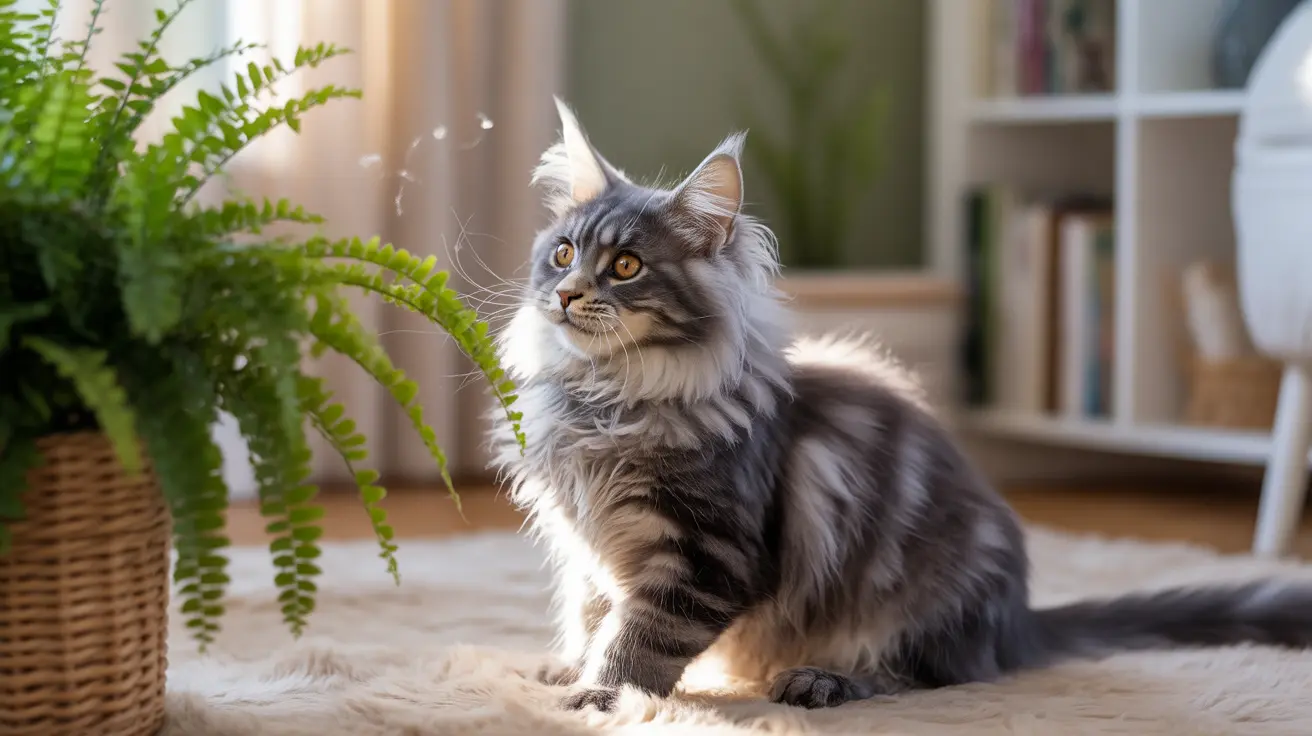Understanding True Ferns vs. Fern-like Plants
The confusion about fern safety often stems from plants marketed as "ferns" that aren't actually true ferns at all. True ferns, like the Boston fern and maidenhair fern, are generally safe for cats. However, fern-like plants such as the asparagus fern (which belongs to the lily family) can be dangerous for your feline companion.
Safe True Ferns for Cat Households
These common true ferns are considered non-toxic to cats:
- Boston fern
- Sword fern
- Maidenhair fern
- Bird's nest fern
- Button fern
- Rabbit's foot fern
- Staghorn fern
- Mother fern
Dangerous Fern Varieties to Avoid
Some plants that look like ferns or are commonly called ferns can be toxic to cats:
- Asparagus fern (all varieties)
- Foxtail fern
- Hemlock fern
- Bracken fern
Symptoms of Fern Toxicity in Cats
Even with non-toxic ferns, cats may experience mild discomfort if they consume large amounts. However, toxic varieties can cause more severe symptoms, including:
- Vomiting
- Diarrhea
- Excessive drooling
- Abdominal pain
- Loss of appetite
- Skin irritation or blisters (from contact)
- Lethargy
- Difficulty swallowing
Prevention and Safety Measures
To keep your cat safe around ferns:
- Always verify plant species before bringing them home
- Keep toxic plants completely out of reach
- Use deterrent sprays around safe plants
- Provide cat-friendly alternatives like cat grass
- Monitor your cat's behavior around plants
- Keep plants in hanging baskets or elevated areas
What to Do If Your Cat Eats a Toxic Fern
If you suspect your cat has ingested a toxic fern:
- Remove any remaining plant material from their mouth
- Contact your veterinarian immediately
- Bring a sample of the plant for identification
- Watch for symptoms and follow medical advice
- Keep your cat hydrated if advised by your vet
Frequently Asked Questions
Are all types of ferns safe for cats, or are some varieties toxic?
Not all ferns are safe for cats. While most true ferns are non-toxic, several fern-like plants (such as asparagus fern and foxtail fern) are toxic to cats. It's crucial to identify the specific variety before bringing it into your home.
What symptoms should I watch for if my cat eats a toxic fern or fern-like plant?
Watch for symptoms including vomiting, diarrhea, excessive drooling, abdominal pain, loss of appetite, and skin irritation. Severe cases may show difficulty breathing or swallowing.
How can I tell the difference between a true fern and a fern-like plant that is toxic to cats?
True ferns reproduce through spores on the undersides of their fronds, while fern-like plants may produce flowers or berries. Consult a plant expert or use plant identification apps for accurate identification.
What should I do if my cat ingests a plant suspected to be a toxic fern?
Contact your veterinarian immediately, bring a sample of the plant for identification, and monitor your cat closely for symptoms. Don't wait for symptoms to appear before seeking help.
Which common ferns are considered safe to have around cats in the home?
Safe varieties include Boston fern, maidenhair fern, bird's nest fern, button fern, and rabbit's foot fern. However, even with safe varieties, it's best to discourage cats from chewing on any plants.
Conclusion
While many true ferns are safe for cats, it's essential to be vigilant about which varieties you bring into your home. Always research and verify plant species before purchasing, keep toxic plants out of reach, and monitor your cat's behavior around any houseplants. When in doubt, consult with your veterinarian or choose from the list of known safe ferns to ensure your feline friend's safety and well-being.






